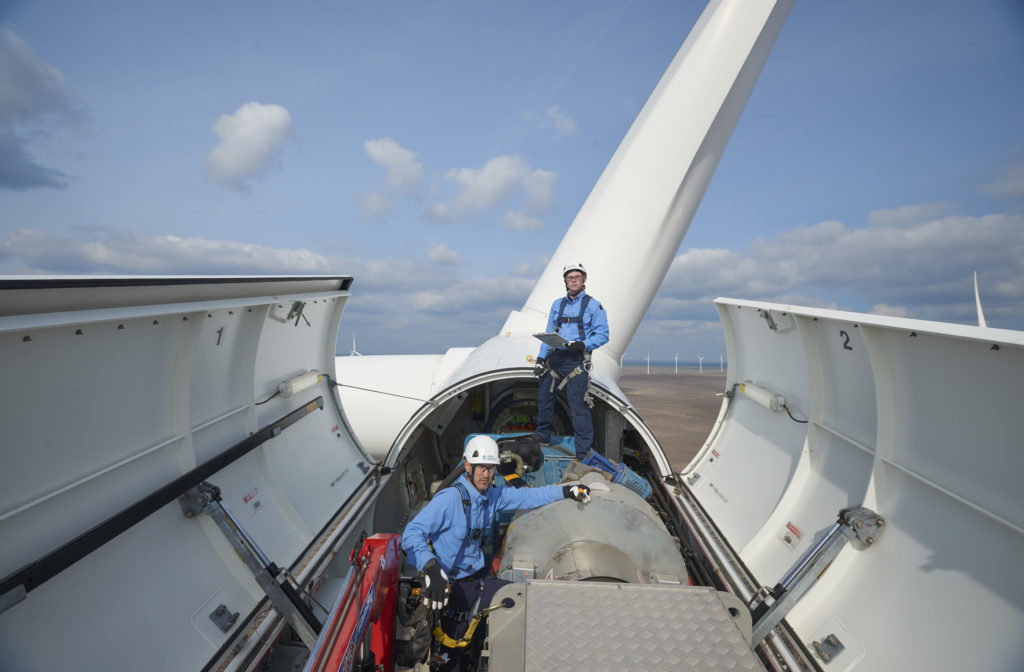
Contributed by Greg VanHouten, Haynes Boone
Wind turbines rarely fail because of physical damage. However, financial losses can be severe. That is why operators purchase property and business interruption insurance. But purchasing insurance is one thing—getting an insurer to cover a catastrophic claim (like the TransAlta failure) is another. This article outlines two ways to increase your chances of a wind turbine failing and the associated repairs and lost income.
FirstImmediately notify your insurer if you discover damage—be it damage caused by a lightning strike, fatigue load, ice accumulation, exposure to airborne particulates, mechanical defects, or some other cause. Prompt notice of damage is critical because, as unfair as it may seem, insurance companies routinely deny claims as “late.” Insurance companies ground such denials in contract language that requires notice within a certain number of days of the discovery of the damage, by the end of the insurance policy period, or in a seemingly more flexible amount of time, like “as soon as reasonably practicable.” Insurers have leveraged such contract language to deny claims made just days “late” and, unfortunately, some courts have even upheld such denials. In 2021, for example, the Court of Appeals of Kentucky ruled that an insurer could deny coverage if the policyholder gave notice only. Three daysLate.This highlights the importance of prompt notice.
It is important to inform your insurer about this. Any damage—however big or small—rather than only significant or catastrophic damage. What may appear to be a small or isolated problem can quickly become a major or widespread problem. One example is the possibility of leading edge erosion occurring on one blade. This could lead to a system-wide problem. In such cases, insurers argue that the widespread damage is due to an isolated issue. If that issue was not noticed in time, then coverage is denied for the entire claim. Although this may seem harsh, major claims have been denied and affirmed by courts. Such occurred in 2018 when a federal court in Illinois held that an insurer properly denied coverage for a series of claims because the policyholder’s initial notice was late and all the claims—even though they arose at different times—were “interrelated.”
Subscribe TodayThe all-new Factor This! Renewable Energy World Podcast. This podcast is specifically designed for the solar industry. Whenever you get your podcasts.
Listen to the most recent episode. It features Kevin Smith, CEO of Lightsource bp Americas, and Heather Zichal CEO of American Clean Power Association.
SecondTake careful notes of your inspection and maintenance records. Make sure you comply with all industry standards and manufacturer recommendations. This is important because insurance companies can and will deny business interruption and property damage claims if the policyholder fails to take sufficient measures to prevent or detect the onset of the damage. Insurers do so upon contract provisions that require the insured to, for example, “use due diligence… in doing all things reasonably practicable to avoid, or diminish any loss herein insured.” See Allianz Global Corporate & Specialty SE Wind Energy Property All Risks Insurance Form. These clauses can be leveraged by insurance companies, as shown in United States v. Eagle Star Ins. Co.An insurer denied coverage for damage sustained by an airplane in a crash because it claimed that the insured failed due diligence when it took off with a buildup of ice, snow and frost on its wings and fuselage. 196 F.2d 317, 318 (9th Cir. 1952), on reh’g, 201 F.2d 764 (9th Cir. 1953).
Similar situations could occur in the wind energy context with ice accumulation. An insurer could, in theory, deny a property damage and business interruption claim arising out of damage caused by ice accumulation by alleging that the policyholder was not “reasonably practicable” in preventing and promptly discovering the ice-related damage. A policyholder could reduce the chance of such a denial by documenting, and maintaining, in a readily accessible database or otherwise. This would allow them to comply with industry standards and manufacturer recommendations regarding anti-icing technologies.
A policyholder could reduce the chance of such denial by documenting inspections and site visits by the insurer or its agents, as well as maintenance and inspection recommendations. By doing so, the policyholder can develop an argument that the insurer cannot deny coverage upon the policyholder’s failure to take action or discover damage that the insurer itself did not recommend or discover. Some sophisticated insurers with significant market share in the wind energy space—Allianz for example—offer public conferences and publish materials on certain cutting-edge issues. For example, in May 2018, Allianz hosted a conference in which “ice detection” was discussed. It would be difficult for Allianz to subsequently deny an ice-related claim for the insured’s alleged lack of due diligence when the insured did exactly what was discussed at that conference.
Wind operators need to be able to reduce the chances of a turbine crashing. Insurance should also cover any repairs or lost income. Two factors are particularly important. First, timely notice—it is critically important that policyholders consider notifying their insurer(s) upon the discovery of Any damage. Second, careful documentation of inspection and maintenance records—including compliance with industry standards and manufacturer recommendations. These two simple steps will greatly increase your chances of getting insurance coverage in the case of a windturbine failure. An attorney who specializes is insurance recovery may be able to increase this likelihood.
About the author

Greg Van Houten, a senior associate with Haynes Boone, is based in Washington, D.C., as well as New York. He focuses his practice in insurance counseling and recovery. He represents clients in a variety of industries and sectors, such as renewables, industrial manufacturing, healthcare, laboratory sciences, and electronic trade.
